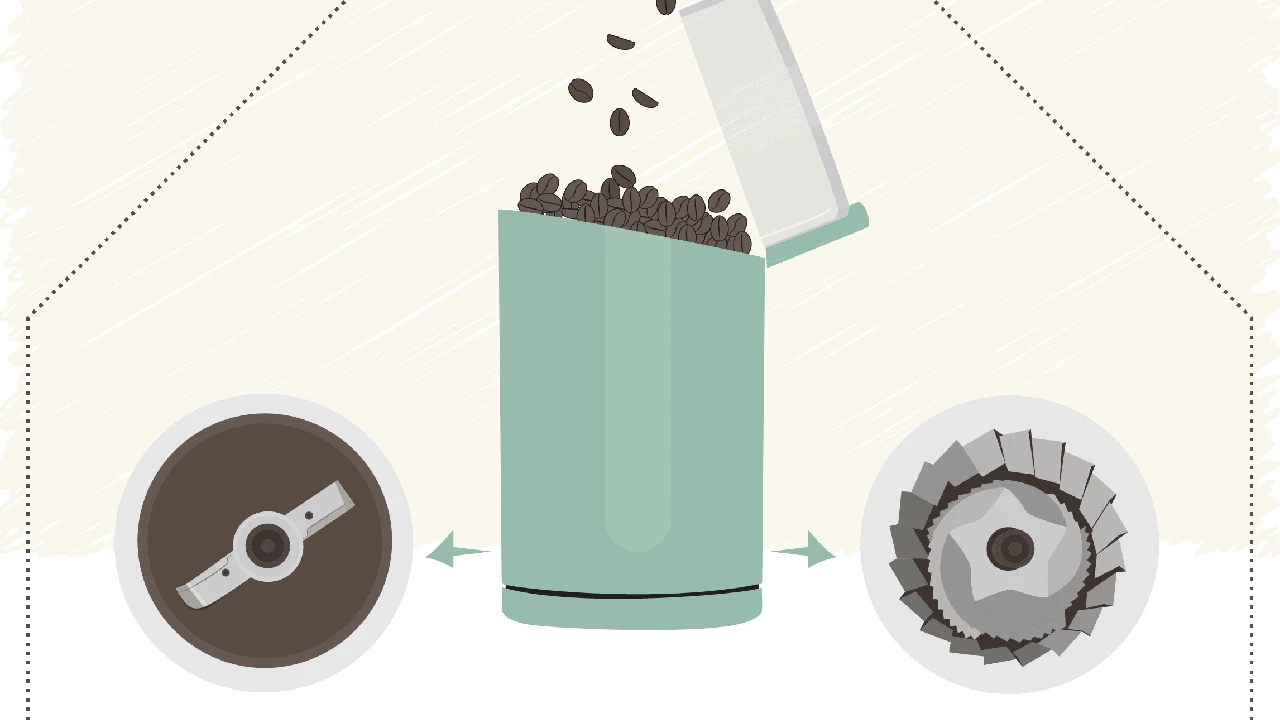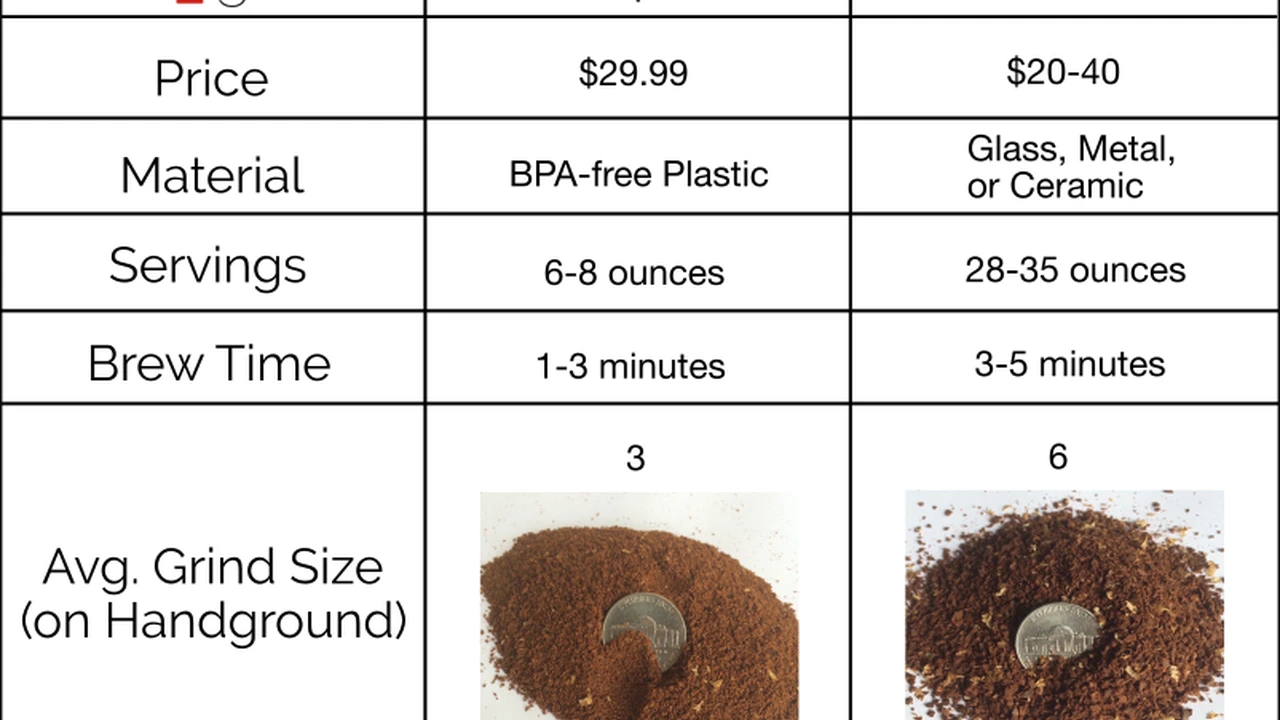Coffee Grinders: Burr vs. Blade - Which is Better?
Burr grinders and blade grinders: what's the difference? We compare the grind quality, consistency, and price of each. Choose the right grinder for your coffee needs.

Understanding Coffee Grinders The Key to a Great Cup
Okay, let's get real. You want amazing coffee, right? It all starts with the grind. Forget pre-ground stuff from the grocery store – seriously. The difference between freshly ground beans and the pre-ground stuff is night and day. And the type of grinder you use makes a HUGE difference. We're diving deep into the Burr vs. Blade grinder debate. Which one reigns supreme? Let's find out.
Burr Grinders Achieving Consistent Coffee Grind Sizes
Burr grinders are the rockstars of the coffee world. Instead of chopping the beans (like blade grinders), they crush them between two revolving abrasive surfaces called burrs. These burrs can be conical or flat, and the distance between them determines the grind size. This is where the magic happens. Because the burrs are a consistent distance apart, you get a much more uniform grind. Think of it like this: imagine trying to chop vegetables with a dull knife versus a sharp, precise one. The sharp knife gives you even slices, while the dull knife leaves you with a mess of different sizes. Burr grinders are your sharp knife for coffee beans.
Benefits of Burr Grinders for Coffee Lovers
- Consistent Grind: This is the big one. Consistent grind equals even extraction, which means better, more balanced flavor.
- Adjustable Grind Size: Burr grinders typically offer a wide range of grind settings, from coarse for French press to fine for espresso. You have control!
- Less Heat: Burr grinders generate less heat than blade grinders, which helps preserve the delicate aromas and flavors of the coffee beans. Overheating can literally "cook" the coffee, making it taste bitter.
- Durability: Burr grinders are generally built to last, with durable components that can withstand years of use.
Conical vs Flat Burr Grinders Choosing the Right Type
You'll often see burr grinders described as conical or flat. What's the difference? Conical burr grinders have a cone-shaped burr that rotates inside a ring-shaped burr. They tend to be quieter and produce less heat than flat burr grinders. Flat burr grinders have two flat, disc-shaped burrs that face each other. They often produce a slightly more consistent grind but can be louder and generate more heat. Honestly, for most home users, the difference is subtle. Don't get too hung up on it unless you're a serious coffee geek.
Burr Grinder Recommendations and Price Points
Okay, let's talk specific models. Here are a few recommendations at different price points:
- Budget-Friendly: Capresso Infinity Burr Grinder (Around $100). This is a great entry-level burr grinder that offers a consistent grind and a decent range of settings. Perfect for someone upgrading from a blade grinder.
- Mid-Range: Baratza Encore (Around $170). A super popular choice for home brewers. It's reliable, easy to use, and produces a consistent grind for various brewing methods.
- High-End: Fellow Ode Brew Grinder (Around $300). Designed specifically for pour-over coffee, this grinder is a powerhouse. It features a powerful motor, professional-grade burrs, and a sleek design. Note: This isn't ideal for espresso.
- Espresso Focused: Breville Smart Grinder Pro (Around $200). Versatile, with a wide range of grind settings suitable for espresso and other brewing methods. Features programmable settings for consistent dosing.
Blade Grinders Affordable But Compromised Coffee Quality
Blade grinders (sometimes called spice grinders) are those small, inexpensive grinders with a spinning blade at the bottom. They're convenient and cheap, but that's pretty much where the advantages end. The blade chops the beans into smaller pieces, but the grind is incredibly uneven. You end up with a mix of large chunks and coffee dust, which leads to inconsistent extraction and a muddy, bitter taste.
Why Blade Grinders Fall Short in Coffee Brewing
- Inconsistent Grind: This is the biggest problem. The uneven grind leads to uneven extraction, resulting in a bitter, sour, and generally unpleasant cup of coffee.
- Heat Generation: The spinning blade generates a lot of heat, which can scorch the coffee beans and further degrade the flavor.
- Lack of Control: You have very little control over the grind size. It's basically a guessing game. The longer you grind, the finer the grind becomes, but it's never consistent.
- Difficult to Clean: The blade is often difficult to clean properly.
Blade Grinder Recommendation (If You Really Insist!)
Honestly, I strongly recommend against using a blade grinder for coffee. But if you absolutely insist, something like a KRUPS Silent Vortex Electric Grinder (Around $30) will do the trick for spices AND coffee in a pinch. Just be prepared for a less-than-stellar cup.
Burr vs Blade Grinder A Side by Side Comparison
Let's break it down in a table:
| Feature | Burr Grinder | Blade Grinder |
|---|---|---|
| Grind Consistency | Excellent | Poor |
| Grind Size Adjustment | Wide Range | Limited/None |
| Heat Generation | Low | High |
| Flavor Preservation | Excellent | Poor |
| Durability | High | Low |
| Price | Higher | Lower |
Choosing the Right Coffee Grinder for Your Needs and Budget
So, which grinder is right for you? It really depends on your budget and your coffee preferences. If you're serious about coffee and want to consistently brew delicious cups, a burr grinder is absolutely worth the investment. The improved flavor and control you'll get are well worth the extra cost.
Factors to Consider When Buying a Coffee Grinder
- Budget: How much are you willing to spend? Burr grinders range in price from around $100 to several hundred dollars.
- Brewing Method: What brewing methods do you use? If you primarily brew French press, you'll need a grinder that can produce a coarse grind. If you're an espresso aficionado, you'll need a grinder that can produce a very fine, consistent grind.
- Frequency of Use: How often do you brew coffee? If you brew coffee every day, you'll want a durable grinder that can withstand frequent use.
- Ease of Use: How easy is the grinder to use and clean? Some grinders are more complicated than others.
- Noise Level: Some grinders are quite noisy. If you're sensitive to noise, look for a quieter model (conical burr grinders tend to be quieter).
- Space: Consider the size of the grinder and whether it will fit comfortably on your countertop.
Upgrading Your Coffee Game The Importance of a Good Grinder
Think of a good coffee grinder as an investment in your daily happiness. Seriously. Upgrading from a blade grinder to a burr grinder is one of the single biggest improvements you can make to your coffee brewing setup. It's like going from listening to music on a tin can to listening to it on high-quality headphones. You'll hear details and nuances in your coffee that you never knew existed. So, ditch the blade grinder and embrace the burr. Your taste buds will thank you!
:max_bytes(150000):strip_icc()/277019-baked-pork-chops-with-cream-of-mushroom-soup-DDMFS-beauty-4x3-BG-7505-5762b731cf30447d9cbbbbbf387beafa.jpg)






